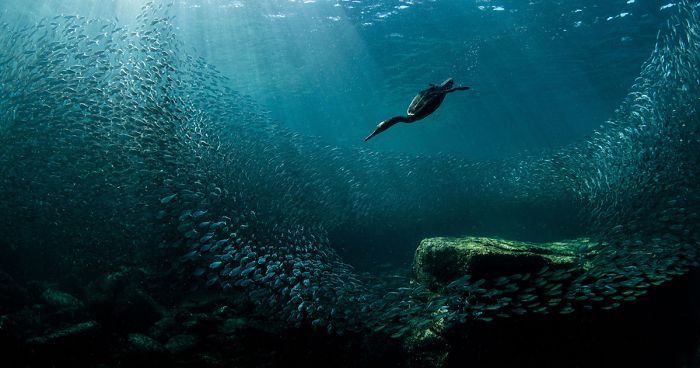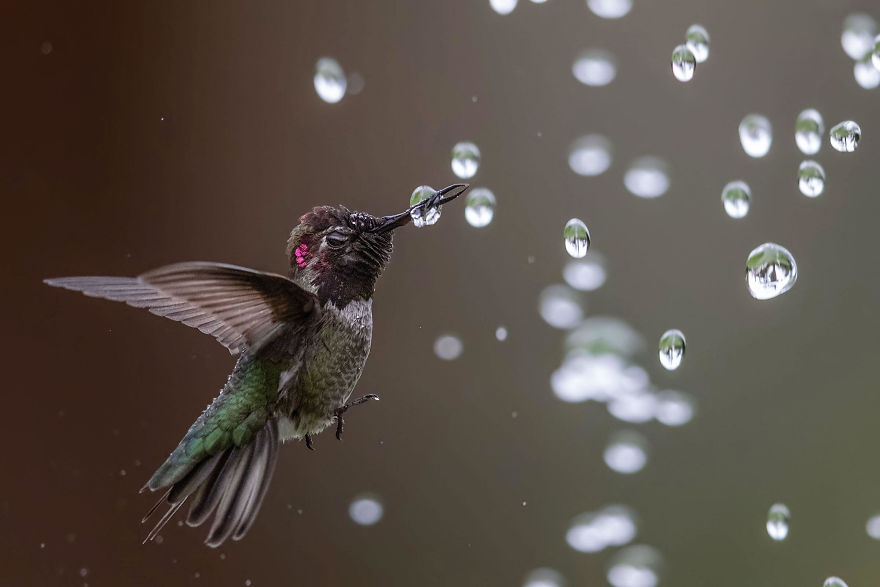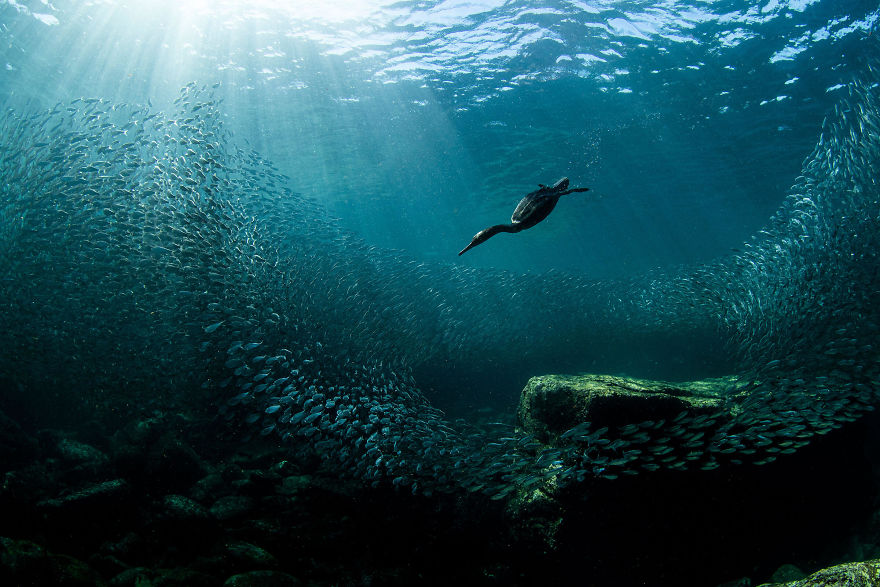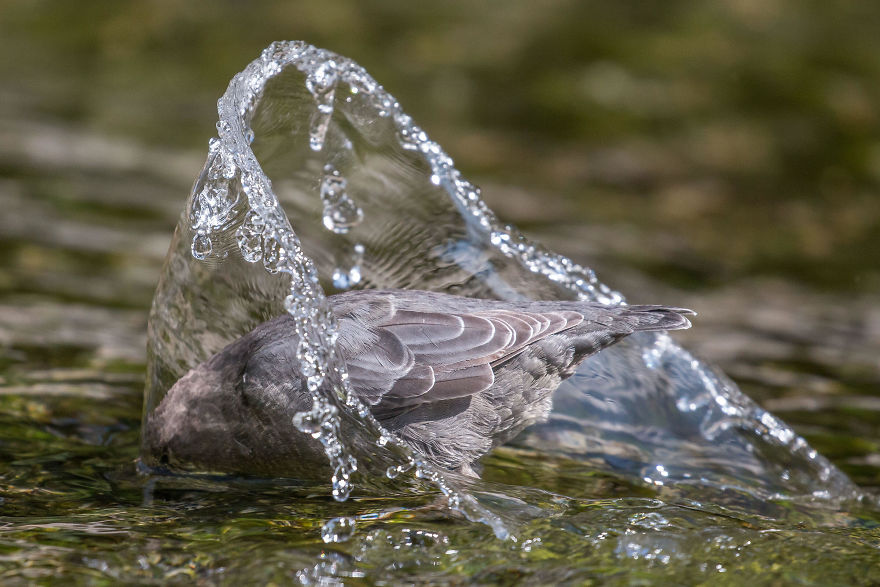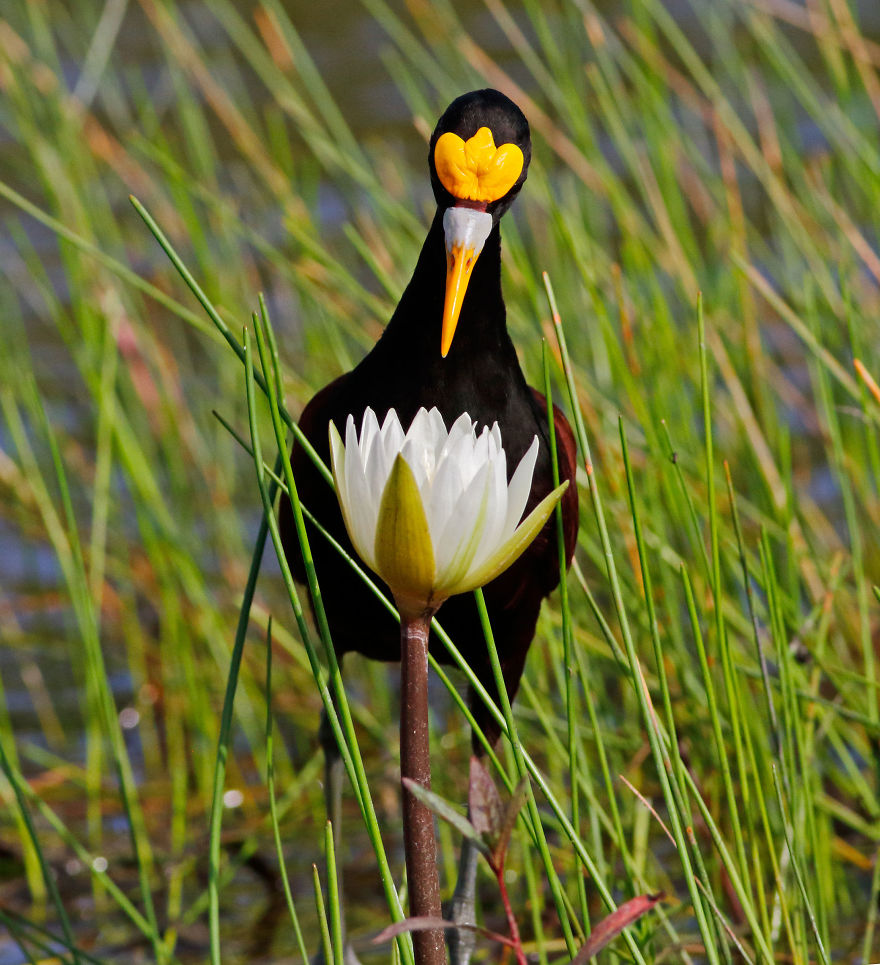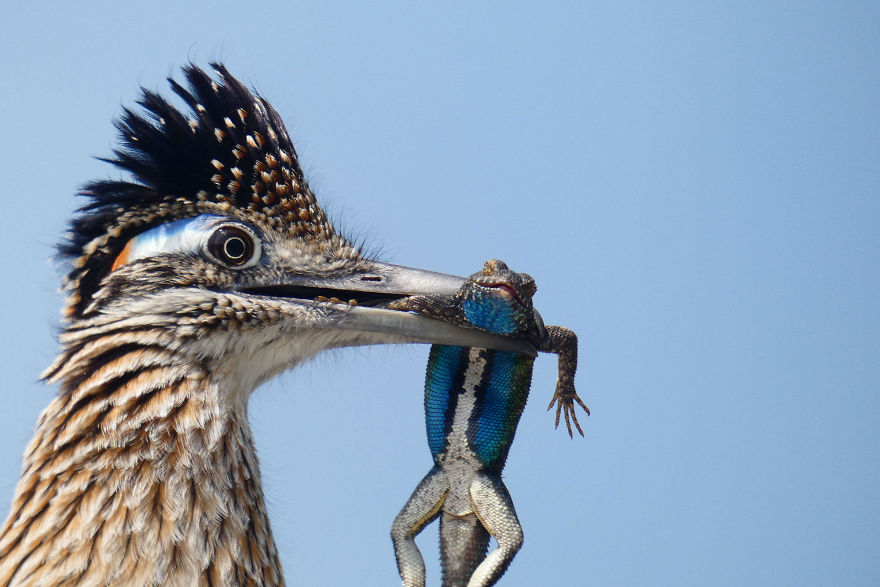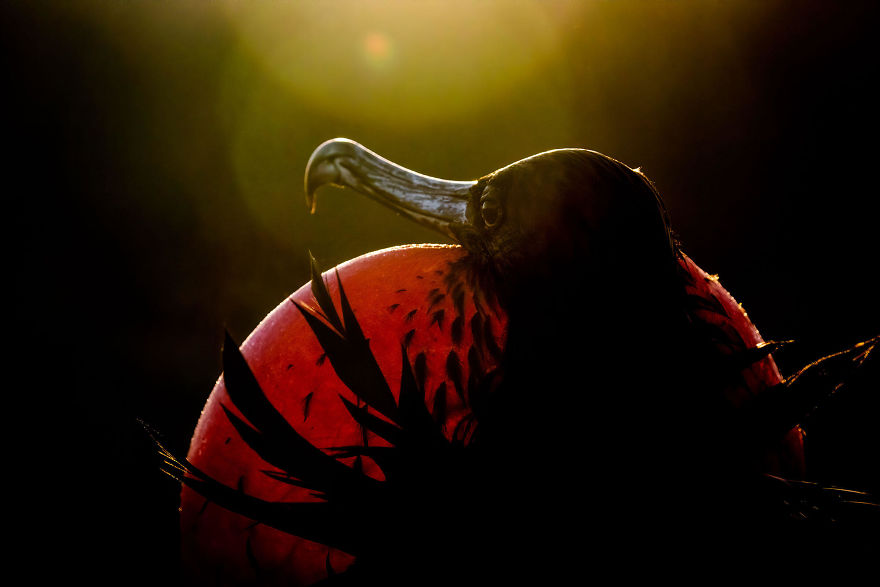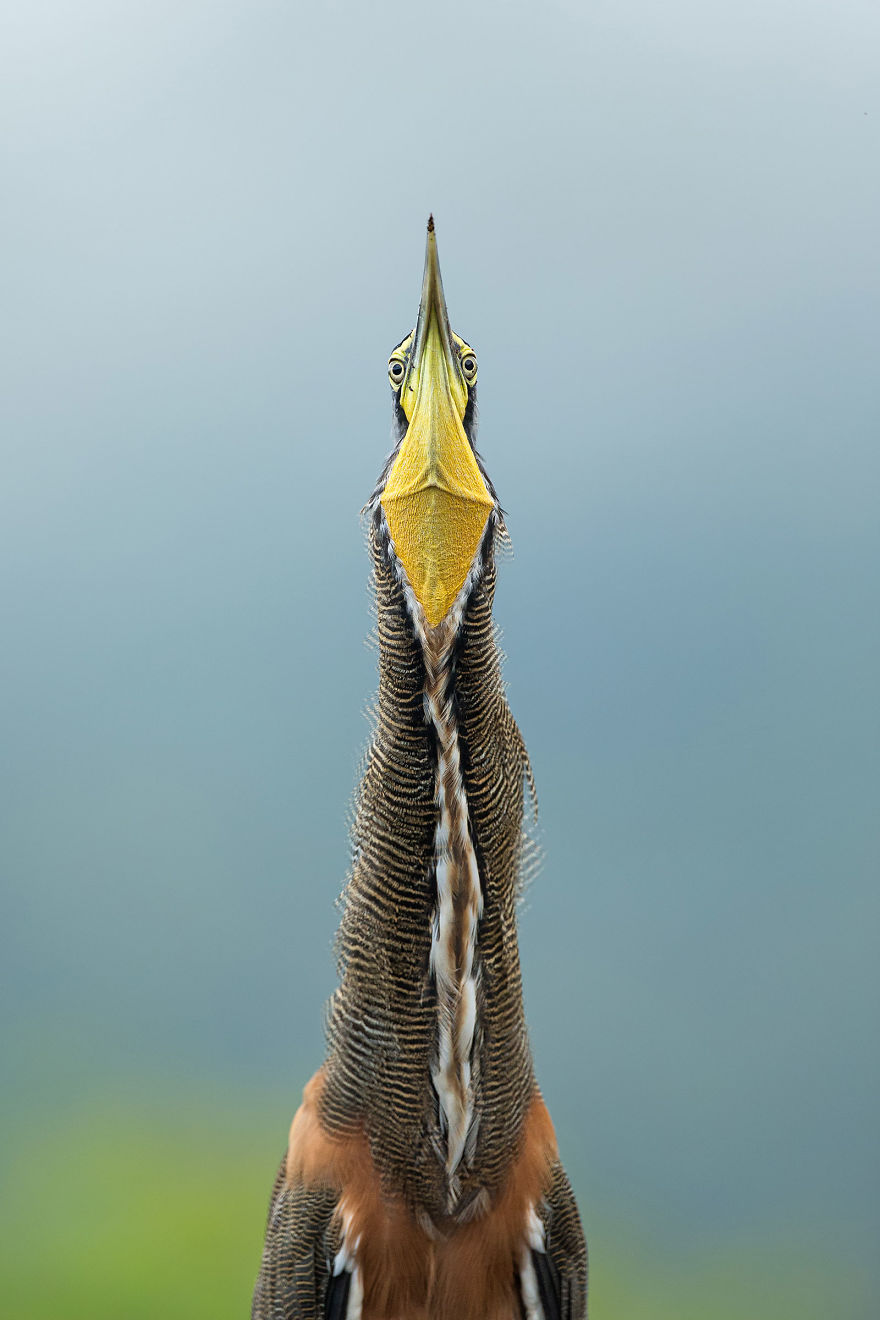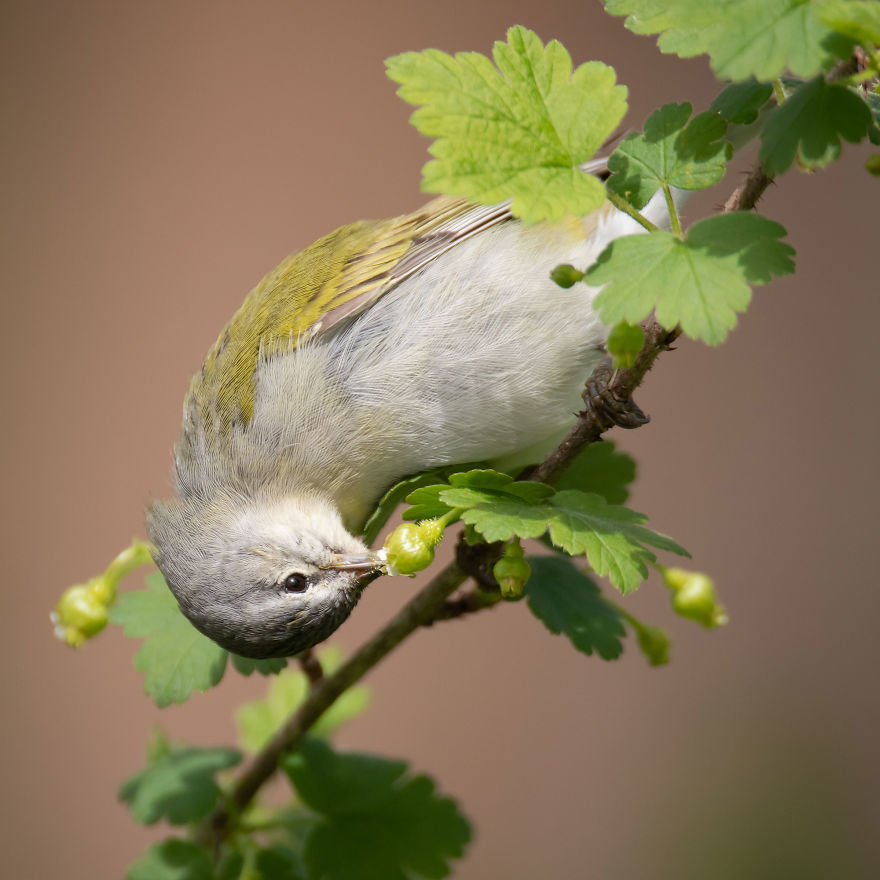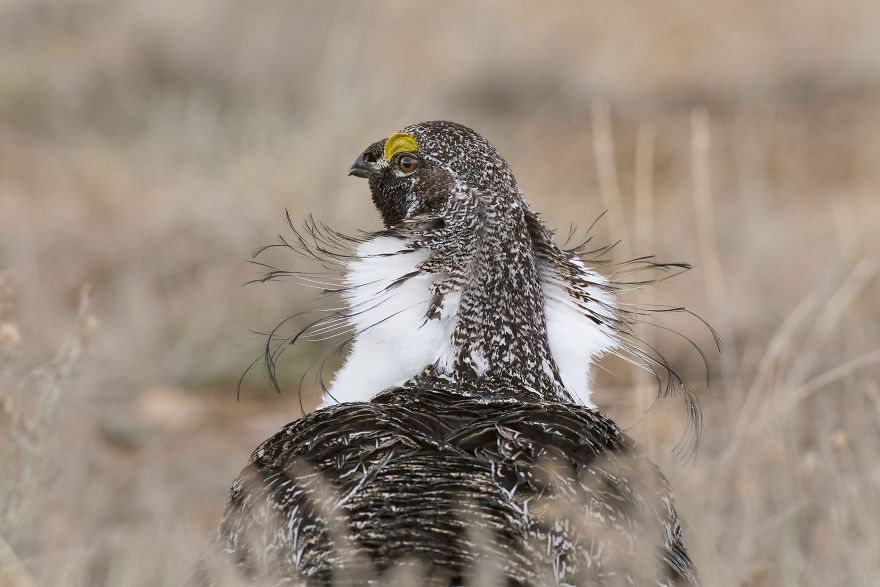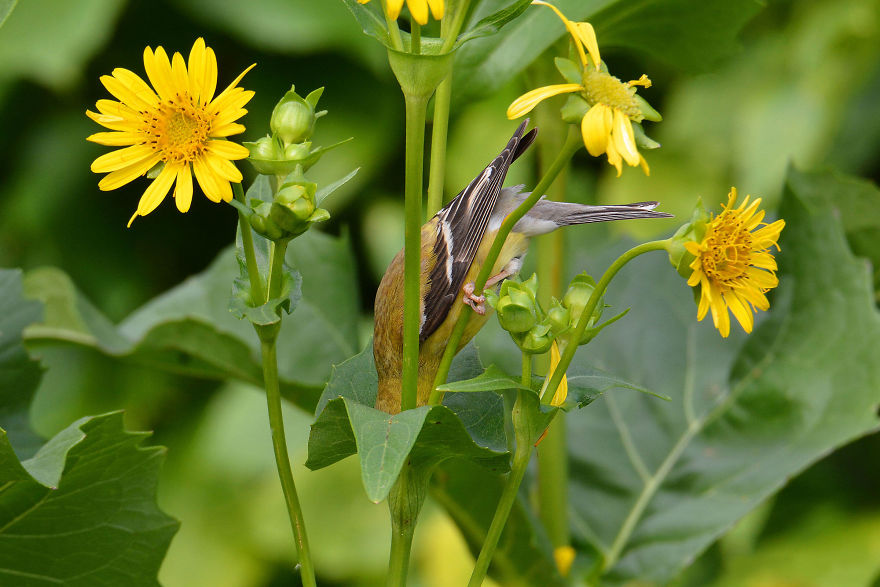The National Audubon Society announced the winning photographs of the 2020 Audubon Photography Awards. The eleventh year of the contest invited photographers across the United States and seven Canadian provinces to share their best bird photos. The award-winning entries were selected from more than 6,000 submissions! In the end, American photographer Joanna Lentini won the grand prize with her magical underwater photograph of a double-crested cormorant diving into the waters of the Bay of La Paz.
More info: audubon.org
This post may include affiliate links.
Amateur Honorable Mention: Anna’s Hummingbird
"Near my home in Fremont is a historic farm with a water fountain that’s a magnet for birds. I was by the fountain looking for warblers and other migrants when I saw this hummingbird, a year-round resident, exhibiting some very interesting behavior. It swooped in for a drink and then stuck around to play in the water, as if trying to catch a droplet. After several frames, I finally captured the bird succeeding at its game.
Human activities aren’t always beneficial for birds, but Anna’s Hummingbird has taken full advantage of changes we’ve made to the landscape. Formerly a resident of Southern California and Baja, it has expanded its breeding range east, to Arizona, and north, to British Columbia. Planting of year-round gardens has allowed it to thrive across this vast new territory."
Grand Prize Winner: Double-Crested Cormorant
"I’ve spent many hours underwater at this California sea lion rookery in the Bay of La Paz, but I had never before encountered diving cormorants there. Shifting my focus from the playful sea lions, I watched in awe as the cormorants plunged beak-first into the sea to snap at the sardines swimming by. Although I spent a long time admiring these birds, I didn’t see a single one catch a fish. Adding insult to injury, curious sea lion pups would zip by the hunting birds and nip at them from behind.
Cormorants are superb divers, well adapted to rapid pursuit of fish underwater. Their bodies are heavy but streamlined, with dense plumage. When they dive, they hold their wings tightly to their sides, propelling themselves with their powerful legs and webbed feet, steering through the water with their tails. Some cormorants may be capable of diving more than 300 feet below the surface, but most of their hunting is done at shallower depths."
Fisher Prize Winner: American Dipper
"I followed a little-known trail in Yosemite to the top of a small waterfall and sat at the edge of the pool. A moment later, a dipper flew in. The river was moving quickly, but it wasn’t too deep. So instead of diving, the bird stuck its head underwater in search of prey. I thought the spectacular splash would make an awesome photo. The bird kept getting closer and closer as I sat snapping hundreds of shots of that splash. I will treasure that afternoon as one of my favorite moments in Yosemite!
The American Dipper lives on the edge—on the boundary between air and water, on the border between streams and their banks, and even on that vague margin between songbirds (it is one, technically) and water birds. Above the surface or below, it can either walk or fly, demonstrating a mastery of all its elements, and attracting the admiration of the most creative photographers."
Youth Winner: Northern Jacana
"On a boat ride on the New River, I noticed a few Northern Jacanas on a patch of water lilies and asked the captain to stop. I hoped our vessel wouldn’t scare away the birds. I couldn’t believe my luck when one walked closer and closer to us. The boat was rocking, but when the bird stopped for a moment to peer into a water lily, I was able to set up and get this special shot.
Distinctive marsh birds of the tropics, jacanas have very long toes, enabling them to walk across floating vegetation as they seek insects and seeds. The Northern Jacana is common from Mexico to Panama and the Caribbean, and sometimes wanders to Texas."
Youth Honorable Mention: Greater Roadrunner
"While on a walk through a nature preserve in Fresno, I heard a roadrunner cooing to its mate. I followed the sound to find the bird clutching a gift for its partner: a really big fence lizard! The roadrunner perched on a post above me for nearly 10 minutes. The lighting was harsh and it was difficult to get the proper camera setting, but I managed to take this shot. I like how the photograph shows a small predator with its prey.
Ritualized feeding is a part of courtship for many birds, from cardinals to gulls to hawks. For the Greater Roadrunner, it’s no challenge for the male to catch a lizard to give to the female. At times, though, he will present to her a large insect or a piece of nest material, or go through the motions of bestowing a gift with nothing at all. Apparently, it’s the thought that counts."
Professional Winner: Magnificent Frigatebird
"The sun was setting behind a frigatebird breeding colony in the Galápagos. The birds were very active and stunningly close, and the experience was all the more special because I was with great friends who were equally mesmerized by the scene. We got on the sand, lying on our bellies and handholding our cameras, composing silhouettes and starbursts on birds’ wingtips. I noticed this male, with his throat pouch lit up by the sun, and zoomed in to capture his portrait.
Frigatebirds are among the most aerial of all birds, by necessity: seabirds that don’t swim, they are almost incapable of taking off from the water’s surface, so they soar on long, angular wings over tropical seas, sometimes for weeks. Males in courtship displays inflate huge, balloon-like red throat pouches, vibrate their wings, and make rattling noises to attract females."
At first, my mind was trying to understand what that red fruit/balloon/setting sun was that the bird was thrust up against ...
Amateur Winner: Bare-Throated Tiger-Heron
"After a torrential rainstorm, I went out on a late-afternoon boat trip on the Tárcoles River. It was still raining when we left the boat ramp, but once the sky finally cleared, we spotted this Bare-throated Tiger-Heron walking along the river. As the boat drifted by, the bird leaned over the bank to watch us. I raised my camera and quickly switched to portrait orientation to capture the beautiful post-storm sky behind it.
Stocky and chunky, suggesting bitterns in shape, the three species of tiger-herons lurk in mangrove swamps and along rivers in the American tropics. The Bare-throated Tiger-Heron is the northernmost of these species, found mainly from Mexico to Panama. It is often most active at dawn and dusk, but fortunate observers sometimes spot one hunting fish and frogs in bright daylight."
Plants For Birds Honorable Mention: Tennessee Warbler On An Eastern Prickly Gooseberry
"This warbler was difficult to photograph as it frantically hopped from branch to branch while foraging on a native gooseberry—one of the plants that flower in early spring in this part of Canada. Gooseberries are an important source of food for exhausted songbirds migrating north over the Great Lakes, and I was thrilled to get a clear image of this warbler drinking nectar from the tiny flowers.
Warblers are mainly insect eaters, but some also have a taste for nectar. On their main wintering grounds in Central America, Tennessee Warblers often show splashes of bright color on their faces, the result of probing in red or orange flowers. Their attraction to nectar continues as they migrate north. In the open woods of southeastern Canada and northern states, the inconspicuous blooms of eastern prickly gooseberry appear in late spring, just in time for migrating warblers to seek them out."
Professional Honorable Mention: Greater Sage-Grouse
"In spring 2019 I made my first venture to watch the Greater Sage-Grouse perform its courtship ritual. Late one afternoon I set up my camera at the edge of a rural road and used my car as a blind. This male was the first bird I saw, and he proved to be a great model. As he faced away from me, he provided a nice profile pose, and I thought it was a neat perspective to get his photo from behind.
After their spectacular springtime courtship dances, Greater Sage-Grouse seem to disappear into the vast sagebrush steppes of the West. Studies have shown that they may move many miles with the seasons, often shifting to higher elevations in summer, lower elevations in winter, so they need large, continuous tracts of habitat to survive."
Plants For Birds Winner: American Goldfinch On A Cup Plant
"Through frequent visits to North Mississippi Regional Park, an area restored with native plants, I became familiar with the cup plant and learned that its leaves can hold rainwater, as the name suggests. I read that birds and other wildlife like to drink from these plants, so I always keep an eye out for bird activity when I pass by them. Finally one late July day I was lucky enough to witness a female American Goldfinch plunge her head into a plant.
Few birds are total vegetarians, but American Goldfinches come close. While other seed eaters feed their young on insects, goldfinches serve mashed-up seeds to their nestlings. The flowers on this cup plant will go to seed later, but in the meantime the plant acts as a watering hole for the birds: its large, opposite leaves, joined at their bases, surround the stem, and create the rain-trapping cup."
I'll bet mosquitos use cup plants as breeding grounds by laying their larvae in them. Wonder if the goldfinches eat those....

 Dark Mode
Dark Mode 

 No fees, cancel anytime
No fees, cancel anytime 






